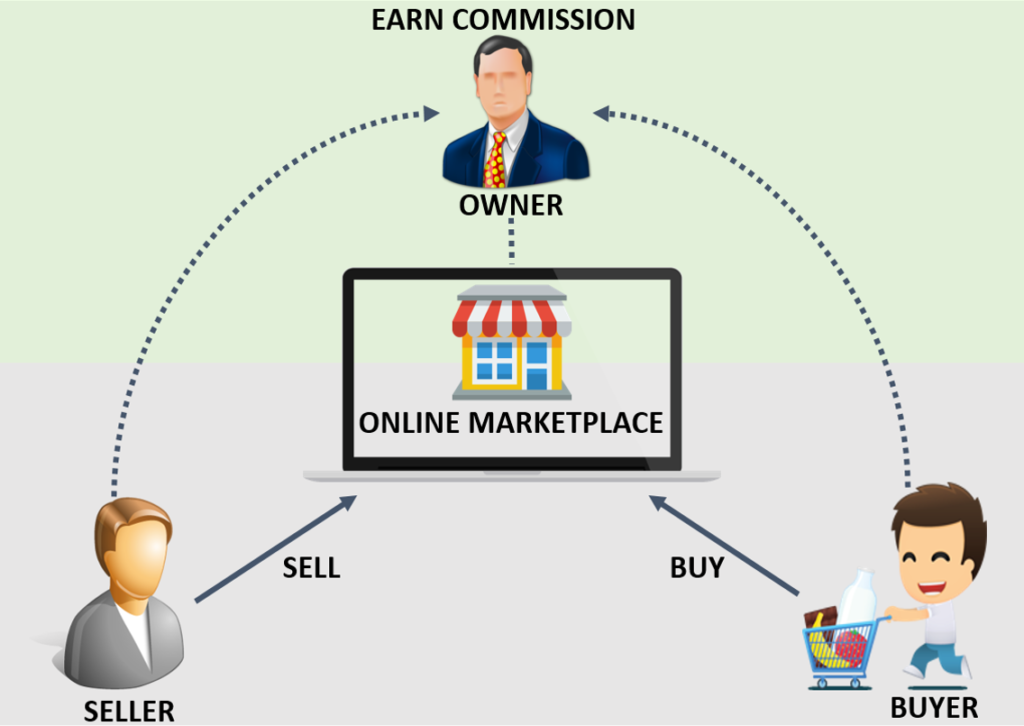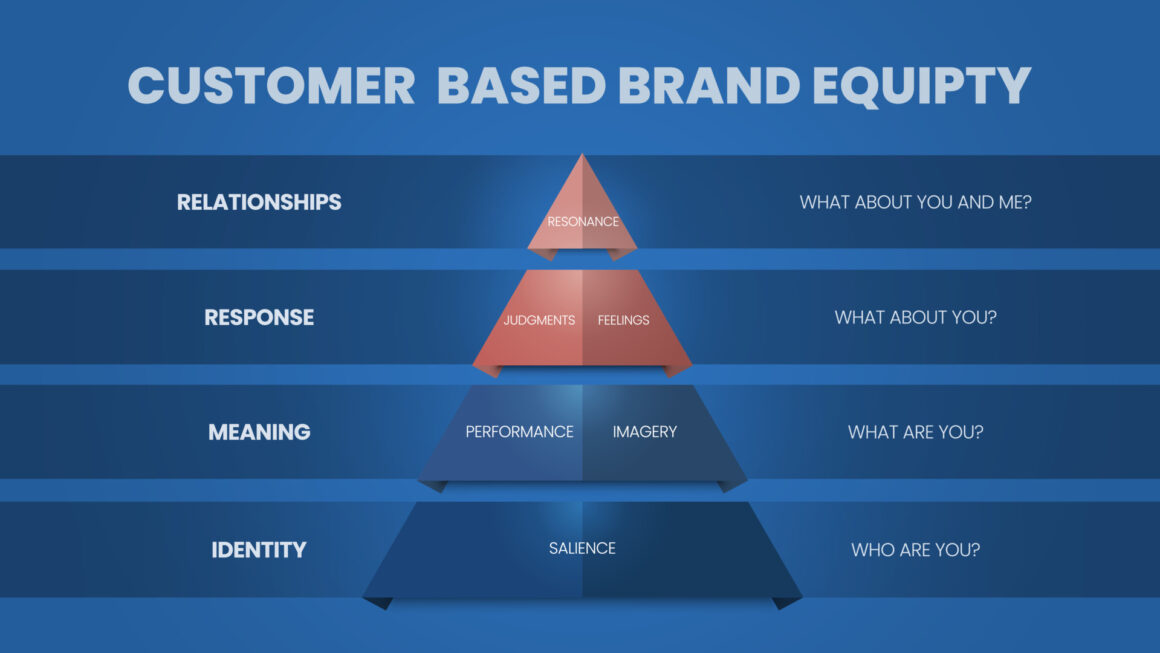Amazon, eBay, Airbnb, or Uber are just a few of many companies operating as an online marketplace. Customers love them for their abundance of choice and shopping convenience.
What you may not know is that these examples (as well as many other marketplaces) have become some of the biggest and most valuable companies in the world.
This article will shed some light into what constitutes an online marketplace, the different types, pros and cons, as well as how to track their success.
Online Marketplace Definition
Online marketplaces connect buyers and sellers on a proprietary and centralized platform. Oftentimes, the marketplace operator does not hold any type of inventory, but helps the buyers and sellers to facilitate a transaction.
His or her duties may include tasks such as handling logistics or facilitating the payment. Sellers can then focus on their core competency, that is providing customers with the most relevant products and services.
Marketplaces come in many shapes or forms, but are often separated between two categories: horizontal or vertical.
Horizontal marketplaces offer products across different categories with a similar level of service. For instance, customers can buy products on eBay ranging from clothing to electronics.
On the other hand, vertical marketplaces focus on one product category, but offers many services attached to it. For instance, rare sneaker marketplace StockX handles aspects such as authentication and quality checks of the product, payment process, or the transportation. It allows them to serve as a trusted source for interested customers.

The Chicken And Egg Problem Of Marketplaces
Marketplaces are built on the premise of buyers and sellers transacting with each other. But when you start, you have none of those. So how do you convince sellers to join a platform without buyers and vice versa?
This problem is referred to as the chicken and egg problem of online marketplaces. Similar to the debate of whether the chicken or egg came first, marketplace enthusiasts face the challenge of figuring out which side to build first.
The more sellers you can attract, the greater value you can provide to your customers. Higher value leads to more buyers, which in turn increase the value for sellers.
So whether you attract buyers or sellers first (or even simultaneously), there’s a few tactics you can employ in order to make your marketplace more attractive.
Types of Marketplace Business Model
These are the five different types of marketplaces we see nowadays:
- Commission Model
- Subscription Model
- Freemium Model
- Listing Model
- Featured Ad Placement
Commission Model
Probably the most widespread form of marketplace approaches in which a commission is charged on each successful transaction. The platform operator then imposes either a fixed or variable fee on the product or service being transacted.
The operator of the platform normally handles the payment and logistics aspects of it while sellers focus on providing high-quality products or services. A key aspect of this model is that anyone (both buyers and sellers) can join the platform for free. The marketplace operator then benefits from all the value creation occurring on the platform.
Examples include companies such as Amazon, eBay, Etsy, or Airbnb. All of these companies charge a commission per transaction and have sellers offering various products on their platform.
Subscription Model
In the subscription revenue model, either or both buyers and sellers are charged a reoccurring fee to access the marketplace. The selling point for customers is that they gain access to a great experience or can simply save money. Sellers, on the other hand, can acquire customers that are likelier to spend money.
The biggest challenge in charging a reoccurring subscription is that the platform has to become valuable enough so that both customers and sellers gain enough benefits from using it. You’d need enough users to convince sellers to pay. And potential customers won’t sign up if they don’t see immediate benefits by joining you.
One example of a successful marketplace is LinkedIn’s B2B solutions. Here, recruiting companies pay a monthly fee to be able to access the platform and get in contact with potential employees. Conversely, customers (in that case employees) can also gain access to LinkedIn’s premium subscription. It allows them to directly get in contact with others or access its learning platform for free.
Freemium Model
Within the freemium model, the marketplace can be used free of charge for both buyers and sellers. Monetization occurs by offering additional features, premium subscriptions, or by cross-selling other services.
The thinking behind this model is that your free platform gets the users hooked, which doesn’t leave him or her a choice but to buy your premium features. The challenge is to find the right balance between your free and premium features, so that people don’t leave you immediately.
A great example is stock photo provider Unsplash. Photos are offered by the sellers while users can access a subset of them for free. If they want to have complete access to all available stock images, they pay a monthly subscription fee or compensate the photographer directly.
Listing Model
In the listing model, sellers are charged for every offer they upload on the platform. This model is utilized when sellers list high-ticket items such as cars or houses. Since resources are scarce, sellers profit from having more of them listed.
Furthermore, the purchasing transaction oftentimes does not occur on the platform, but after meeting with the seller and seeing the listed object. Therefore, listing marketplace normally don’t facilitate the transaction (in terms of payment processing) due to the complexity of the item listed.
The biggest selling point of listing marketplaces is the fact that they drive a lot of traffic to the platform, and as such, allow providers to gain more visibility on their listings.
One of the challenges of this model is to price the listing fee accordingly. If it is to high, sellers will stay away from listing on the platform.
Furthermore, these sites have to be able to drive high volumes of traffic to justify their listing fees. Therefore, they are often at the mercy of Google’s algorithm to show them on top for any given search query.
Examples of this business model include websites such as Trulia.com or Realtor.com.
Featured Ad Placement
Featured ads are oftentimes part of other marketplaces such as the commission or listing models. In this scenario, a seller can opt in to pay an additional fee to have their listing displayed before others.
Again, the main challenge is to drive enough visitors to the site so that sellers are willing to pay for these ads.
One example of a company utilizing this is the classifieds division of eBay. Listing and selling on their platform is free, but users pay a flat fee if they want their offering to be displayed first.
Source: Productmint
To read more content like this, subscribe to our newsletter



